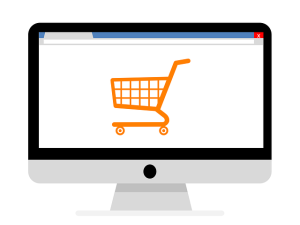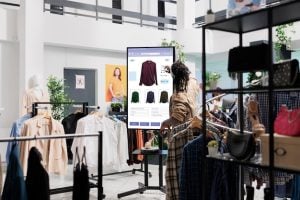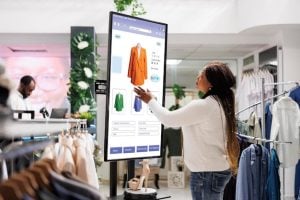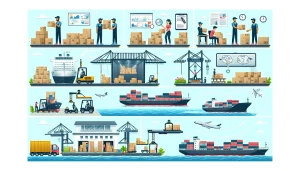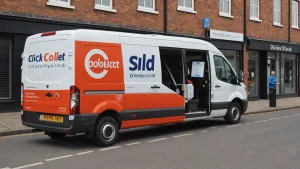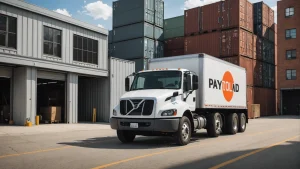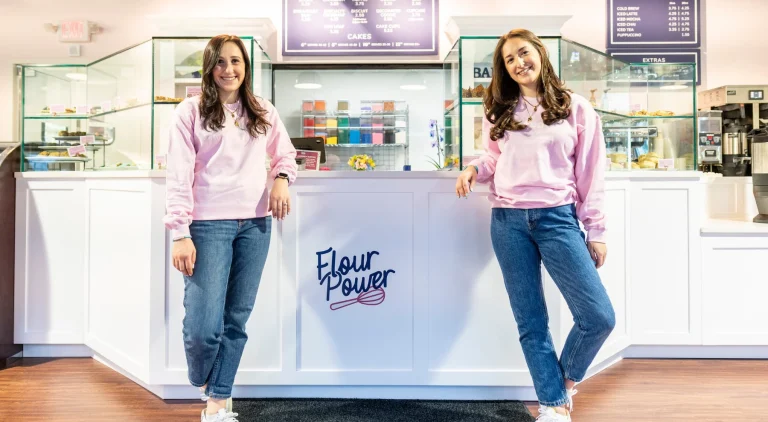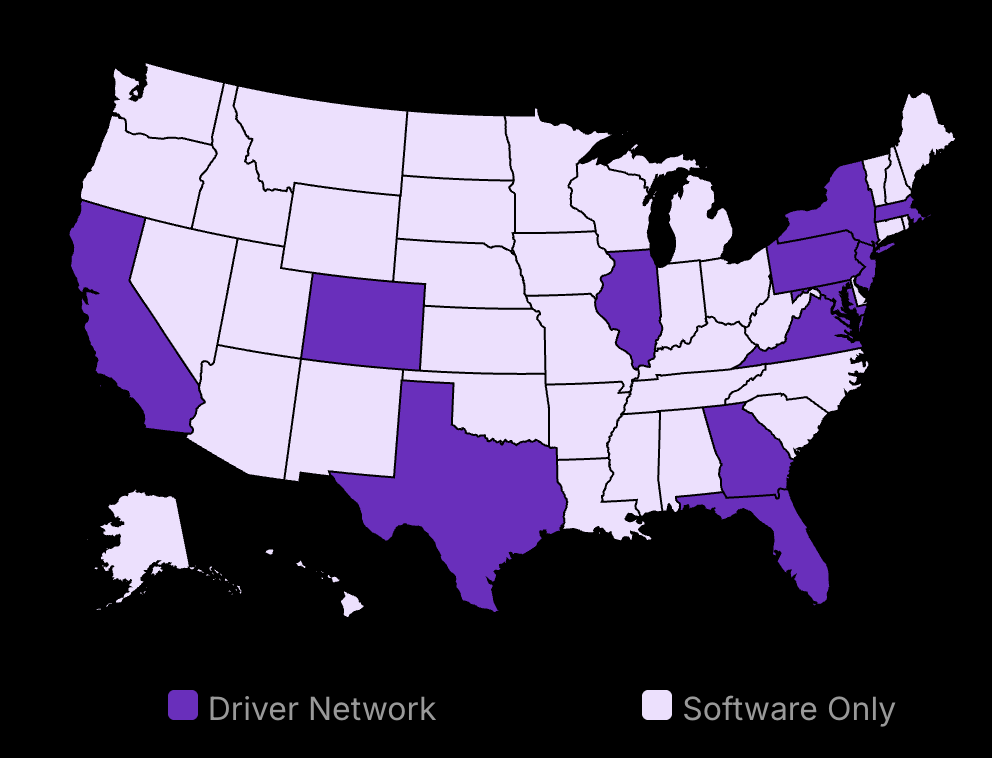In a quiet corner of Manhattan, Sarah checks prices on her phone while standing in a store. Next to her, Michael tries on a jacket he found online but wants to feel in person. Two doors down, Emma picks up groceries she ordered an hour ago through an app, enjoying the convenience of home delivery.
This is shopping in 2025.
Physical stores aren’t dying—they’re evolving into Brick-and-Click models, blending digital and physical customer experiences. Retailers are leveraging multiple sales channels to expand their customer base and better meet consumer demands. For example, businesses that successfully combine two channels—online and physical—are seeing increased customer experience satisfaction and loyalty. The numbers tell the story:
Multi-Channel Shopping: 73% of customers now use multiple channels during their shopping journey, according to recent data.
But here’s what’s interesting: Businesses that mix online and physical stores see higher customer lifetime value compared to single-channel retailers. This isn’t just about having a website and a store. It’s about making them work together.
Think about it: When was the last time you bought something without checking it online first? Or order online without wishing you could see it in person?
The future of retail isn’t choosing between online or physical stores – it’s about using both. Smart retailers are creating systems where their physical stores support their online presence, and their digital platforms drive foot traffic to stores. To get a clearer picture of what’s shaping these decisions, consider the latest trends in consumer behavior. For an in-depth analysis, you can explore the discussion on the latest trends in the comparison between online shopping and in-store experiences for 2025.
This guide shows you how successful businesses are combining both worlds. You’ll learn practical steps to merge your online and offline presence, understand what customers expect in 2025, and see how technology makes it all possible. To understand more about effective integration strategies, take a look at this insightful piece on the hybrid business model. It delves into methods that can lead to online and offline success, illustrating the benefits of combining these approaches.
Let’s look at how retail is changing, and more importantly, how you can stay ahead of these changes.

Lower your delivery costs by 23%
How we reduce costs:
- No delivery vehicle expenses
- Optimized local routes
- Pay-per-delivery model
- Average 23% delivery cost reduction
Omnichannel Retail Strategies to Boost Your Business
Meet modern consumer needs with combined online and in-store tactics.
Streamline logistics and inventory between online and offline channels.
Ensure cohesive branding across all retail avenues.
Benefits of Omnichannel Strategies
Integrating online and in-store efforts creates a seamless customer experience. Consumers enjoy the convenience of browsing online and picking up items in-store. This approach not only increases satisfaction but can also drive sales. A consistent shopping experience, whether on a mobile app or in a physical shop, is key to engagement. Jeff Bezos noted, “If you make customers unhappy on the internet, they can each tell 6,000 friends.” This underscores the importance of a well-managed strategy.
Engagement and retention improve as well. Businesses can leverage customer data across different channels to personalize experiences, making users feel valued and understood. By collecting data from multiple sources, companies gain deeper insights into consumer habits, preferences, and buying patterns.
Key to Customer Retention: Research found that companies with strong omnichannel strategies retain 89% of their customers, compared to 33% for those with weak strategies.
Steps to Implementing Omnichannel Retail for Online-Only Retailers
To start, assess and integrate your current channels. Analyze how well your current online and offline presences connect. Are your systems communicating effectively? A case study from a leading retail chain shows that integrating their e-commerce with physical storefronts led to a 30% increase in revenue, illustrating the potential financial benefits of channel alignment. One effective way to enhance customer engagement is adopting an effective omnichannel marketing strategy. By utilizing various channels to connect with consumers, businesses can reach more local customers and strengthen their overall presence. For actionable insights, check out these valuable tips on Omnichannel Marketing that can lead to a more connected shopping experience.
Omnichannel Excellence: Aberdeen Group's findings indicate that companies with strong omnichannel capabilities experience a 91% higher year-over-year increase in customer retention rates compared to organizations lacking these strategies.
Next, use technology to connect these operations. Software solutions like Salesforce or SAP can help manage inventory and enhance customer service across platforms. By doing this, businesses can ensure that stock levels are accurate, and customers receive timely updates. It also allows for personalized offers based on customer activity.
Finally, train staff for seamless customer interactions. Employees should be able to navigate digital tools as easily as they manage physical tasks. They are on the front lines of delivering the unified experience customers expect. Regular training sessions ensure they are up-to-date with the latest tools and techniques to engage with users effectively.
Integrating Online and Physical Store Experiences
Merging online research with in-store experiences enhances customer satisfaction.
Technologies like augmented reality and mobile apps ensure smooth customer transitions.
Localized promotions drive foot traffic and boost sales.
Seamlessly Merging Online Research with In-Store Experiences
In the evolving retail scene, combining online and physical store experiences is vital. As a majority of all retail sales happen online combined with the rapid annual growth rate of e-commerce, the pressure mounts on traditional stores to stay relevant. The key to creating a compelling retail environment is to merge online research with in-store experiences.
Customers often initiate their journey online by researching products, reading reviews, and comparing prices. But ultimately, they seek tactile validation in physical stores. Consumers now expect seamless movement between online and offline interactions. To ensure that retailers maintain inventory accuracy in this evolving landscape, employing techniques such as periodic audits can be beneficial. One effective method is cycle counting, a process that allows businesses to regularly verify stock levels on a rotating schedule without disrupting daily operations. For insights on how to implement this practice effectively, check out this post on improving operations with cycle counting.
They want to see and feel products in person after researching them online. This integration not only satisfies immediate customer needs but also builds long-term brand loyalty. Bob Willett, the former president of Best Buy International, encapsulates this shift: “The sooner we drop the ‘e’ out of ‘e-commerce’ and just call it commerce, the better.”
Customer Preference: 55% of customers prefer online (28%) or hybrid (27%) shopping experiences, as noted in an IBM survey. Meanwhile, 45% still prefer traditional in-store experiences.
Enhancing Brick and Mortar Store Technology
To truly integrate online and physical stores, retailers must leverage advanced in-store technology. Digital kiosks, self-scanning devices, and augmented reality (AR) features are revolutionizing the shopping experience. AR lets customers view virtual product demos or try products on without physical contact.
Virtual fitting rooms, common in fashion retail, cut down on returns and assure customers about fit and style. Mobile integrations like self-checkouts also simplify and speed up the shopping process. Augmented reality enhances interactivity, making shopping both informative and enjoyable. These innovations not only attract tech-savvy customers, particularly Gen Z, who enjoy digital solutions but also close gaps e-tailers haven’t yet addressed.
Beyond this, various thought leaders in retail advocate for greater technological investments. Jim Brett, President of West Elm, notes the unique benefits brick-and-mortar stores have: “I think brick-and-mortar is an amazing opportunity to use our stores and our store staff as a vehicle to truly engage with the community….” This engagement becomes more profound with tech integration.
Creating Cross-Platform Promotions
Another essential aspect of integration is crafting cross-platform promotions. By advertising exclusive in-store promotions online, businesses can draw more foot traffic into physical locations. These online promotions foster a sense of urgency and exclusivity among customers.
Syncing loyalty programs across both platforms further incentivizes customers to shop through different channels. Integrated promotional strategies not only attract online shoppers to physical stores but also elevate their overall shopping journey, making them more likely to return. You can start with these simple steps:
Create exclusive in-store promotions advertised online.
Encourage online visits with in-store event ads.
Sync loyalty programs for cross-platform appeal.
Offer bundled promotions to drive cross-channel traffic.
Launch newsletters highlighting brick-and-click advantages.
Impact on In-Store Purchases: About 67% of click-and-collect customers who pick up their orders in-store also make additional purchases, demonstrating how this service can drive extra sales and increase foot traffic.
For further insight, books such as “Retail Marketing Strategy” by Constant Berkhout provide advanced discussion on effective multi-channel strategies. The text dives into detailed case studies on cross-platform success, offering practical applications and marketing wisdom.
Key Customer Behavior Trends in Hybrid Retail
Customers prefer shopping options that offer ease and time-saving.
Shoppers now favor experiences that offer more than just goods.
Data reveals patterns in shopping behavior merging digital and physical avenues.
Rise of Experience-Based Shopping
Event-centric visits to stores are becoming a trend. Shoppers crave more than traditional buying. Stores now host events or activities, making shopping interactive. Research found that Millennials prioritize experiences like dining or decor alongside shopping. These activities create a social atmosphere that entices return visits.
Events tailored to demographics also draw attention. For instance, toy stores might host workshops or play days for children, turning a shopping trip into a family outing.
Interactions between in-store experiences and online evaluations are significant. Many people review products or event details online before stepping into stores.
Digital First: 87% of shoppers research online before buying in-store.
This impacts decision-making since a poor review might deter a store visit or purchase. It creates a feedback loop where experiences begin online but conclude in person. Aspects like design exhibitions or cooking demos can be checked online first, enhancing the physical interaction when consumers are better informed.
Local influencers play a vital role in drawing store traffic. Collaborations with local figures elevate brand presence and event turnout. When influencers promote events, they provide a personal touch that resonates with local audiences. This blend of store events and influencers is another layer of experience-based shopping. It’s effective because it humanizes brands and creates relatable stories. Retailers should focus on inviting influencers whose values align with their brand to deepen their connection.
Flexible Shopping Habits
Shoppers now favor click-and-collect methods. It merges the convenience of online shopping with the immediacy of in-store pickup. This option minimizes shipping wait times and eliminates delivery costs. It also helps retailers manage their stock efficiently. In fact, 1 in 2 people prefer these hybrid options, highlighting that flexibility is no longer a perk, but a necessity.
Consumer Usage: In the last six months, 67% of American shoppers have utilized click-and-collect services, indicating strong consumer engagement with this shopping method.
A seamless journey from online to offline is expected by consumers. Online product checks followed by physical inspections and purchases indicate changes in shopping pathways. Omnichannel strategies cater to these habits by ensuring smooth transitions. This requires synchronized inventory systems and customer service channels, underscoring the need for integrated technology solutions.
Digital trends have influenced when people shop with changing peak times. With more shoppers preferring evening browsing and weekend pick-ups, there is a noticeable shift. This affects staffing schedules and promotions.
Retailers responding to these digital-induced trends can maintain sales and market relevance. Understanding these shifting patterns is crucial, and books like “Consumer Shift: How Changing Values Are Reshaping the Consumer Landscape” by Nigel Marsh provide deeper insights.
Future Projections: By 2027, click-and-collect is anticipated to account for nearly 20% of all e-commerce spending, underscoring its growing role in the retail landscape.
By understanding these consumer trends, retailers can adjust strategies and remain competitive. Comprehensive learning platforms like Coursera provide courses on customer behavior shifts that retailers may find beneficial. They’re an essential part of adapting to an evolving retail environment.
Technology Advancements Transforming Brick-and-Click Models
AI predicts inventory needs and sales trends.
Big Data reveals customer behavior and preferences.
IoT enhances supply chain and store operations.
Artificial Intelligence in Retail
Artificial Intelligence has become a game changer in retail, especially for brick-and-click models. AI automates inventory management, making it efficient by predicting stock levels based on sales trends and historical data. Traditional methods relied heavily on manual checks and estimates.
AI analyzes vast amounts of data and provides more accurate stock levels. Retailers like Zara are known to use AI for predicting trends and managing inventory, improving both the customer experience and profit margins.
Revenue Increase: A study found that 69% of retailers reported an increase in their annual revenue as a direct result of adopting AI technologies.
AI is not just about managing inventory. It also personalizes customer interactions. By analyzing customer data, AI suggests products based on preferences and past purchases. This personal touch helps in creating personalized marketing strategies that resonate with individual customers. Books like “Predictive Analytics: The Power To Predict Who Will Click, Buy, Lie, or Die” by Eric Siegel offer deeper insights into how predictive models function in retail.
Personalized Recommendations: Retail brands leveraging advanced digital personalization tools have seen revenue increases of 6% to 10% faster, attributed to tailored product recommendations powered by AI.
Moreover, AI helps in shaping real-time pricing strategies. Pricing dynamically adjusts according to market trends, competition, and demand. It can automatically lower prices on surplus items or raise them during high demand. This flexible pricing strategy is key to staying competitive without sacrificing profit. Stats show that companies using AI pricing see increased sales.
However, some caution that too much reliance on AI can miss out on human intuition. For those interested in learning more, “Algorithms to Live By: The Computer Science of Human Decisions” by Brian Christian is an excellent read.
Operating Cost Reduction: Alongside revenue growth, 72% of retailers using AI indicated they experienced a decrease in operating costs, showcasing AI's efficiency-enhancing capabilities.
The Internet of Things in Stores
IoT technology is reshaping how stores and supply chains function. Smart shelves equipped with sensors track product levels in real-time, notifying staff when stocks are low or misplaced. This reduces the risk of stockouts and optimizes inventory management. Stores are moving away from the conventional shelf management systems. IoT brings a level of automation and accuracy that’s hard to achieve otherwise.
What’s fascinating is IoT’s ability to connect retail stores with their supply chain systems. With IoT, devices communicate across various platforms, ensuring a smoother replenishment process. This integrated approach cuts down on lead times and improves efficiency. It’s a game changer in maintaining inventory levels without manual intervention. IoT-based tracking systems have enhanced the accuracy and timeliness of logistics operations.
IoT isn’t just for inventory management. It also enhances security. Retailers now use IoT cameras and sensors to prevent theft and monitor customer behavior within the store. These sensors collect data about customer movement patterns, aiding in the optimization of store layouts. Research suggests that IoT-enabled surveillance systems have reduced theft significantly. Those keen on diving deeper can explore “The Everything Store” by Brad Stone, which provides a broader view of how technology influences retail environments.
Leveraging Big Data Effectively
Big Data plays a crucial role in understanding and responding to customer preferences. By analyzing purchase history and customer interactions, companies tailor their offerings to meet specific needs. By understanding what drives sales, retailers can focus their strategies on high-demand products.
Big Data can also optimize store layouts based on traffic patterns. By seeing which areas are most frequented, retailers rearrange products to highlight popular items or encourage more purchases. This turns a simple store visit into a strategic journey, increasing potential sales. “Competing on Analytics: The New Science of Winning” by Thomas H. Davenport provides an in-depth look at data utilization in business.
Big Data refines marketing strategies too. Armed with comprehensive customer data, retailers develop targeted campaigns that resonate with their audience, enhancing engagement and conversion rates. However, the constant minefield of data privacy concerns is a challenge. There’s a need for a balance between personalization and privacy. Engaging further can be done with “Data Science for Business: What You Need to Know About Data Mining and Data-Analytic Thinking” by Foster Provost for an advanced understanding of data application in business contexts.
Here’s an essential critique: while technology offers massive advantages, it demands significant investment. Small businesses might find the costs prohibitive. Moreover, technology’s rapid evolution requires continuous updates, which can be resource-intensive. Despite these challenges, the potential benefits in efficiency and customer satisfaction make embracing these technologies worthwhile.
Understanding the Brick-and-Click Model
Combines online and offline stores for broader market access.
Strengthens brand trust by offering multiple shopping options.
Adapts quickly to changing consumer habits and preferences.
Defining the Brick-and-Click Model
The brick-and-click model combines online and physical outlets. This model allows businesses to maintain a traditional store while using online platforms for additional sales. Consumers can research products online before purchasing in-store or choose to buy directly from a website. Major players like Walmart and Best Buy have adopted this model to empower customers with the flexibility of choice.
This model’s roots go back to the early 2000s when online shopping saw rapid growth. Retailers who once relied solely on physical locations have had to adapt or risk losing market share. The blending of online sales channels with brick-and-mortar operations gives businesses a competitive edge. Retailers aim to create an integrated experience. The possibility of browsing goods online and then examining them in-store is a major draw for many consumers.
Moreover, the ability to engage with customers in various formats helps retailers gather comprehensive data. This facilitates better inventory planning and personalized marketing. Businesses that have successfully used brick-and-click include Nordstrom, which integrates digital purchasing into its physical operations. They offer services like online order pickup and returns at physical locations, thus bridging the gap between the two worlds.
Evolution from Traditional Models
In the past, retailers operated on a purely physical storefront model. With the e-commerce boom, many realized the limitations of reaching broader audiences. The shift demanded a reconceptualization of retail strategy. Retailers needed to acknowledge both virtual and in-person shopping experiences.
Initially, this shift meant establishing an online presence as an augmentation. However, as digital commerce matured, businesses began fully integrating digital with physical commerce. For instance, traditional models relied on foot traffic, whereas new integrations use online traffic to drive offline sales and vice versa.
Books such as “The Everything Store” by Brad Stone provide insights into how giants like Amazon redefined the industry by blending digital interfaces with logistics traditionally handled in physical spaces.
Retailers started leveraging user data to analyze purchasing habits, thus refining both their digital and physical offerings. This understanding can be seen in giants like Apple, whose stores are both showcases and sales points, demonstrating a perfect synergy between their online and offline efforts.
Synergy between Digital and Physical Presence
A significant strength of the brick-and-click model lies in the synergy achieved between digital and physical offerings. With proper integration, digital platforms can direct consumers to brick-and-mortar locations for final purchases. Conversely, physical stores serve as valuable touchpoints for enhanced customer service that online platforms may lack.
Take the case of retailers employing tools like augmented reality in physical stores. Customers can use apps to visualize products’ placement in their homes in real time. This fusion of tech in physical retail reinforces decision-making processes initiated online. Furthermore, digital channels bar consumer insights, translating them into actionable data in real time. This enhances inventory management and personalization, benefiting both the online and offline domains.
Statistical reports indicate that businesses incorporating such integrated approaches witness higher sales and customer loyalty. Companies focusing on channel integration tend to outshine those operating in isolated frameworks, as they consistently achieve superior customer engagement and retention.
Advantages of the Brick-and-Click Approach
Broader Reach and Diverse Markets
The dual nature of this model extends a business’s reach. Customers not near a physical location have access to the brand’s complete offerings via online platforms. Online presence allows retailers to tap into new geographical markets without establishing a physical location, reducing overhead costs. This expansion opens doors to customer segments previously unreachable through traditional methods alone.
Market Penetration: A substantial 90% of customers expect unified interactions across multiple channels, indicating a strong market demand for cohesive shopping experiences.
Adapting to Consumer Shifts
The model enables retailers to respond quickly to evolving consumer patterns. In digital platforms, retailers can implement changes rapidly—be it tweaking pricing or employing seasonal promotions. The adaptability inherent in this model grants a distinct advantage. For instance, if online data reflects a growing interest in sustainability, a retailer can quickly highlight eco-friendly products in-store.
Boosting Brand Visibility and Trust
Retailers employing the brick-and-click method often see enhanced brand trust. Offering multiple points of interaction reassures customers of genuine and transparent business practices. Physical stores provide the trust factor and tangibility that some online-only operations may lack. The ability to offer seamless experiences strengthens brand loyalty. Studies suggest that trust escalates when customers feel they have tangible access, alongside digital interactions.
Challenges and Solutions
Handling Inventory Across Locations
Inventory management across diverse locations remains a challenge. Retailers face issues such as stock inaccuracies that can hinder customer satisfaction. Solutions involve integrating technologies like Point of Sale (POS) systems that sync inventory in real-time across locations. Advanced systems allow for efficient tracking, ensuring that stock levels are appropriately balanced between warehouses, stores, and online platforms.
Consumer Satisfaction: Retailers with well-implemented omnichannel strategies report a 25% increase in customer satisfaction scores.
Balancing Offline and Online Customer Service
Consumers expect seamless service across all channels. This expectation can strain resources if not properly managed. A solution is training staff in omnichannel service, enabling them to handle inquiries efficiently whether they originate online or in-store. Staff should be equipped to assist customers through integrated communication systems, blending chat, phone, and face-to-face interactions, thus maintaining consistent service excellence.
Consumer Expectations: Approximately 75% of consumers desire a seamless omnichannel experience while shopping, yet only 25% are satisfied with the current offerings from retailers.
Overcoming Technological Integration Issues
As the model leans heavily on tech integration, flaws can be costly. Issues in system integration often arise due to outdated infrastructure or inadequate staff training. Regular upgrades and comprehensive staff training mitigate these risks. Collaborating with technology partners can provide expertise and tools that streamline complex processes. Consistent education around technological tools empowers staff to deliver seamless consumer experiences.
Conclusion
Physical stores and online shopping are now working together better than ever, forming the foundation of a robust business model. The rise of the brick-and-click store highlights how integrating physical locations with online stores creates seamless customer experiences. Data shows that brick-and-click businesses leveraging multiple sales channels see more sales than those relying on a single approach. This is crucial because customers want options—sometimes they browse online, while other times they prefer to touch products in stores.
The success of click-and-mortar retail hinges on how well businesses connect their online stores with their physical locations. Smart companies are adopting AI to track inventory, utilize web analytics tools to gather customer insights, and enhance service with optimized shipping and returns policies, ensuring smooth experiences across all channels.
For business owners, this means focusing on three key areas: First, ensuring your online store and physical location operate as a unified system. Second, employing technologies like smart shelves and apps to streamline shopping. Third, training staff to address both online and in-store customer needs effectively.
Looking ahead to 2025, brick-and-click stores will continue to gain momentum, as businesses that master both traditional retailer and online channels will dominate the market. The question isn’t whether to combine physical stores and online shopping but how quickly you can implement this business model for your brand.
Take the first step: identify one area where your online store and physical location can collaborate more effectively. Start there.





